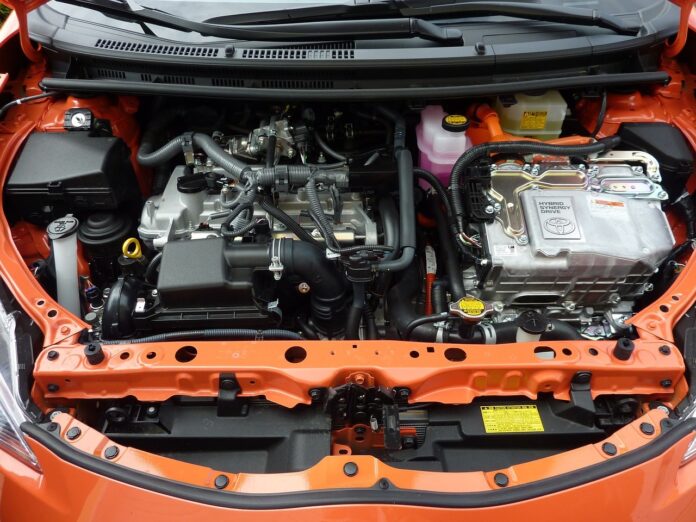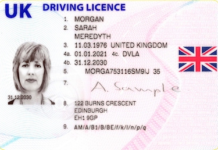Insurance experts share six maintenance checks every motorist should be doing as often as they can
Whilst it is important to routinely check your car as often as you can, performing a thorough annual check at the start of the year can help mitigate the risk of breakdowns occurring later in the year. This can also help you to develop healthy habits to ensure you are aware of how your car is performing and when to get it checked out.
Motor insurance experts at One Sure Insurance, have shared their checklist of essential car maintenance tips to identify whether your car is likely to need any repairs. Many of these checks can be performed at home, but you will need some assistance from a mechanic to replace some of these parts.
Battery performance check
Car batteries supply the electrical current for the starter, engine, and other electronic components, and the car will often fail to start if this is not working correctly. During the early months is a good time to check the performance of the car battery as colder winter weather can affect its ability to hold its charge.
The first and probably most obvious sign of battery failure is the ignition struggling to start or the engine not turning on at all.
If your engine starts fine, but you notice a red battery warning light appear on your dashboard this should not be ignored. This warning light often looks like a small rectangular box with a plus and minus sign inside of it.
If this light is permanently on, it indicates a replacement battery is needed, while a flickering light means the connection may be faulty. You may also notice that the vehicle’s headlights are dimmer than they should be since they are receiving less electric power.
Car batteries usually last between three and five years when properly cared for, but various factors can affect their lifespan. You can check the health of a car battery by connecting a voltmeter to see if the reading is between 12.4V and 12.7V or not, or by seeing if the headlights are dimmer than they should be.
It is recommended to get the car battery replaced by a garage or car repair service due to the risk of acid spillage and exposed electrical wiring.
Brake performance check
With some roads being at risk of ice and snow throughout winter, it is important that your brakes work correctly. Although many car models use different brake systems, there are still signs of brake failure that can be spotted before they become dangerous to use.
The brake fluid should be replaced every couple of years, and there are a couple of checks that drivers can do themselves. Check your dashboard to see if your car brake warning light is on, telling you your brake fluid may be low or that your brakes need replacing if the fluid is already full.
You may also feel hear unusual noises when braking, such as squeaking or grinding sounds from the brake pads. See if the brake fluid levels are between the minimum and maximum lines in the brake fluid reservoir under the bonnet on the master cylinder. Otherwise, it might need topping up.
The main indication of broken brakes is the brake pad wear warning light on the car’s display board, indicating they may be almost worn out. However, not all cars have brake pad sensors so have your car checked immediately by a qualified professional if you think your brakes are faulty at all. It is advised that you have your brake discs and brake pads inspected every 10,000 miles anyway to prevent potential accidents, but this depends on your driving habits and car parts.
Tyre performance check
Keeping your tyres well-maintained is another habit that should be practiced when driving regularly, especially when carrying extra weight or before a long trip. Worn tyre treads can be especially dangerous in the winter when icy or wet conditions can increase safe stopping distances.
In order to remain road safe, car tyres need a 1.6mm minimum dread depth by law. To check whether your tyres meet this minimum, you can use a digital tyre tread gauge which you can pick up from Halfords for £12, which will also check your tyre pressure.
If you don’t have a tyre tread gauge, you can insert a 20p coin into the centre of the tyre tread grooves. If the outer band of the coin is visible, your tread is likely below the legal limit and the tyre will need to be replaced.
Colder temperatures can also reduce your car’s tyre pressure, as the air within the tyre condenses and takes up less room. Consult the vehicle handbook or the inside of your fuel cap to find your correct tyre pressure.
You can check your current tyre pressure by using a tyre pressure gauge. Most petrol stations offer air pumps that will let you inflate your tyres to the correct pressure for between 30p and £1. To save money over the long run, you can purchase an electric tyre pump from Halfords for around £35, which plugs into your vehicle’s cigarette lighter.
Engine coolant check
Another important check is your car’s engine coolant, which is a mixture of ionised water and antifreeze, designed to prevent your engine from overheating when in use.
The first warning sign is the engine coolant warning light on the dashboard, which often looks like a thermometer floating in water. If this light comes on, it’s important that you pull over as soon as it’s safe to do so rather than carrying on driving.
If this warning light appears, it can be because the coolant level is lower than it should be, which could be a sign that you have a leak in the water pump or radiator.
To check if your engine coolant level is low, ensure that the engine is switched off and that it has been allowed to cool for at least 30 minutes if the car has been in use.
Open your bonnet and look for a semi-translucent reservoir known as the expansion tank, which contains a coloured liquid. The coolant level should be between the minimum and maximum markings on the side of this reservoir.
If it is below the minimum marking, make sure to find your vehicle’s correct engine coolant in the owner’s manual if attempting to top it up yourself or ask a professional for advice.
If topping up yourself, use a 50/50 mix of ionized water and coolant. Open the coolant filler cap slowly to release any pressure then top up the liquid to the maximum marking.
If the warning light is on, but the coolant levels are between the minimum and maximum markings, it is likely to instead be a fault with the coolant sensor. You should be able to continue driving the car without any issue, but this will need to be inspected by a mechanic as soon as possible.
Lights check
It is advised to check your vehicle lights regularly, including your fog lamps, headlamps, side lamps, brake lights and the registration plate light. All of them need to be working correctly to ensure other road users can see you easily and so that you have a clear view of the road.
The best way to confirm your lights are working is to ask someone else to walk around the car and see if they are all operating when switched on. Remember to check the lights for your number plate at nighttime as well, since you can be fined if your registration cannot be clearly seen.
Change any broken bulbs as soon as possible so there are no issues during your next journey. This can be done by a professional or by yourself, though make sure the bulbs used are compatible and suitable for the type of light. We recommend replacing bulbs in pairs at the same time, as one bulb failing can signal the need to change both.
Windscreen wiper check
While it is a good habit to replace your car’s windscreen wipers once a year anyway, there are a couple of telltale signs that can indicate your wipers are not in optimal condition.
Any streaks or smears left on the windscreen could mean the blades are damaged, or debris might have built up over time. Similarly, blades that have bent out of shape may start skipping across the windscreen instead of covering the whole area.
You can make your wipers last longer throughout the year by clearing off any ice, snow, and debris before use, keeping the washer fluid topped up, and only using them when the screen is already wet.
Help keep news FREE for our readers
Supporting your local community newspaper/online news outlet is crucial now more than ever. If you believe in independent journalism, then consider making a valuable contribution by making a one-time or monthly donation. We operate in rural areas where providing unbiased news can be challenging. Read More About Supporting The West Wales Chronicle






















